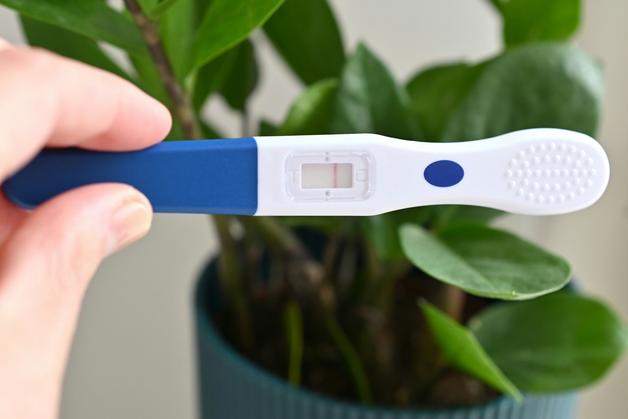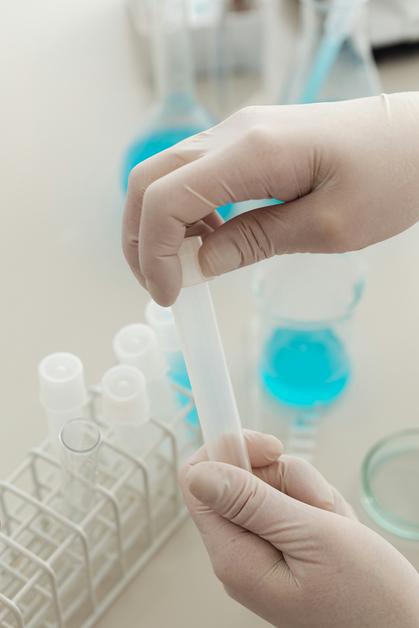For parents navigating the winding road between suspicion and certainty, the “pregnancy test” can feel like both a lifeline and a puzzle. That little stick, so unassuming, holds the power to kindle anticipation, usher in waves of worry, or provide long-awaited relief. Thoughts race: How soon is soon enough? Is a faint line trustworthy? What about those stories of “false positives” or the notorious evaporation line? Worries about accuracy, optimal timing, and misinterpretation swirl—especially when cycles are unpredictable, symptoms are ambiguous, or medical terminology clouds the picture.
Pregnancy stirs a kaleidoscope of emotions and questions, each as valid as the next. With all the rapid technological advances and nuanced clinical recommendations, it’s easy for doubt to creep in. How does a “pregnancy test” actually work? Are digital versions superior, or is a classic strip just as dependable? When does the body even start signaling its secret? This exploration sheds light on these dilemmas, provides scientific explanations that respect your intelligence, and, above all, aims to empower your choices at each pivotal step.
Understanding the Pregnancy Test: Science, Timing, and Sensitivity
You may have heard of human chorionic gonadotropin (hCG), but what exactly triggers its presence? Here’s what happens on a physiological level: a fertilized egg, about six to ten days after conception, burrows into the uterine lining—and voilà—your body starts producing hCG. This hormone’s concentration grows exponentially, usually doubling every two to three days in early pregnancy. A pregnancy test detects this invisible signal, translating your body’s changes into clear, readable results.
Timing is everything. While blood tests can pick up even minute traces of hCG (sometimes as early as seven days after ovulation), most urine-based pregnancy tests, including at-home kits, deliver reliable answers from the first day of a missed period—roughly 14 days after ovulation. Those high-sensitivity devices that boast “six days sooner” capabilities? They do exist, but a test taken before hCG is detectable will almost certainly show a false negative.
Best practice? Use first morning urine, when hCG is at its highest concentration. Avoid excess liquids that might dilute this crucial marker. Always check that the pregnancy test isn’t past its expiration date or exposed to heat or moisture, as these factors can wreak havoc on test accuracy.
Types of Pregnancy Tests and Their Mechanisms
Today’s “pregnancy test” landscape is rich in choice, but the underlying technology is elegantly simple. Two main options vie for attention:
Urine-based tests: Accessible, convenient, and affordable. Whether you choose narrowly focused test strips, intuitive midstream sticks, or tech-forward digital devices, the heart of the process is a lateral flow immunoassay, which captures and binds hCG on a specialized membrane. Digital devices may spell out “pregnant” or “not pregnant,” sidestepping the confusion over faint or ambiguous lines. App-connected tests even offer cycle tracking, reminders, and early trend analysis—a modern twist on an ancient question.
Blood tests: Administered only in laboratory settings, these measure hCG with a sensitivity beyond at-home kits (as low as 1–2 mIU/mL). Quantitative blood tests provide an exact hCG measurement, helpful for tracking pregnancy progression or clarifying uncertain situations. While waiting for laboratory confirmation can be nerve-wracking, the precision is unmatched.
When, How, and Why: Practical Strategies for Reliable Results
If you’re facing a missed period, wondering whether that twinge or fatigue might mean something more, the rules for the “pregnancy test” remain straightforward:
- Start testing on the first day of a missed period for highest accuracy (especially with typical cycles).
- Highly sensitive tests can be tried early, but negative results may simply mean it’s too soon for hCG detection.
- For irregular or unpredictable cycles, a 21-day wait after unprotected intercourse reduces ambiguity.
Adhere to these universally recommended pointers:
- Collect first morning urine—hCG peaks overnight.
- Follow instructions step by step; subtle differences between brands can alter the outcome.
- Use the pregnancy test within the reading time indicated (usually 3–5 minutes). Delayed checks may yield misleading evaporation lines.
- If the result is negative but suspicions linger, retest in several days. hCG surges rapidly, so timing makes all the difference.
Common pitfalls include: testing too early, expired kits, misreading faint results, or improper sample collection. Remember that certain medications—particularly those used in fertility treatments—contain hCG and may trigger a false positive.
Interpreting Results—and Facing Uncertainty
Pregnancy tests speak three languages: positive, negative, and unclear.
Positive: A “pregnant” reading, two distinct lines, or a plus sign is generally a strong indicator of pregnancy. Still, only a tiny margin for error remains—chemical pregnancies, recent miscarriages, or hCG-triggering drugs can muddy the waters. Schedule a healthcare provider appointment for further confirmation, and consider a blood test for precision.
Negative: If your period is late and the test says “not pregnant,” don’t rush to conclusions. The absence of detectable hCG may simply mean your body needs more time. Keep an eye on symptoms and test again using first morning urine.
Unclear/Invalid: No control line, streaky or faint results, and missing indicators should prompt a retest. An invalid “pregnancy test” result can arise from manufacturing faults, improper use, or even environmental factors such as stored humidity. If repeated tests remain inconclusive, laboratory confirmation or professional guidance is warranted.
Symptoms alone—a missed period, breast sensitivity, nausea—often mimic premenstrual changes and do not offer diagnostic certainty. The waiting game is anything but easy, and emotional reactions can vary wildly, encompassing excitement, doubt, and even fear of the unknown.
Beyond the Result: Next Steps and Medical Recommendations
A positive home pregnancy test is a significant milestone, but it’s only the beginning. Contact your healthcare provider to arrange further evaluation—usually a quantitative blood test and, once you reach five or six weeks gestation, an ultrasound to confirm the pregnancy’s implantation site and estimate gestational age. This is also the time to initiate recommended prenatal care: start folic acid, avoid tobacco or alcohol, and discuss any chronic health conditions or unique circumstances, such as prior fertility treatments or irregular cycles, which may require adapted support.
Red flags to watch for include severe abdominal pain, heavy bleeding, or unusual symptoms. These warrant immediate medical attention, as they could signal an ectopic pregnancy or other complications.
Choosing the Right Pregnancy Test: An Informed Approach
Faced with the spectrum of brands and formats, selection can feel daunting. Here’s a practical checklist for parents:
- Opt for a high-sensitivity test—the lower the number (mIU/mL), the earlier hCG can be detected.
- Prefer established brands known for clear results and FDA/CE certification: First Response, Clearblue, Easy@Home, ClinicalGuard.
- Examine packaging for damage and confirm the expiration date.
- Consider digital tests to minimize user interpretation errors, especially when anxiety is high.
- Always read instructions with care—variations in design or methodology can change the answer.
Debunking Persistent Myths and Sharing Evidence-Based Advice
Despite advances in science, myths persist:
- A home pregnancy test won’t pick up pregnancy immediately after conception—the body needs time to make enough hCG, which only happens after implantation.
- Drinking huge amounts of water to “help” the test actually dilutes the hormone, reducing reliability.
- Birth control pills have no impact on pregnancy test accuracy.
- A faint positive line usually signals a positive result—hCG is present, just not abundant; rechecking soon can clarify.
- Proper storage (a cool, dry place) and prompt result reading ensure optimal accuracy.
Key Takeaways
- The pregnancy test works by detecting hCG, a hormone unique to early pregnancy, and both urine and blood tests have a pivotal role to play.
- Optimal timing (first day of a missed period) and first morning urine significantly enhance test reliability.
- Carefully follow pregnancy test instructions to avoid common errors, and if faced with ambiguous results, repeat the process or reach out to a healthcare provider.
- Confirm every home pregnancy test result—especially positive ones—with professional evaluation, including blood testing and early ultrasound when indicated.
- The path from question to confirmation is rarely linear, yet reliable answers and comprehensive support exist at every step.
Reliable resources and compassionate professionals are available to guide you through every uncertainty, whether interpreting a confusing result or planning the healthiest start for your future child. For tailored support and free child health questionnaires, consider downloading the Heloa app—personalized advice at your fingertips, for every stage of your parenting journey.
Questions Parents Ask
Can medications or medical conditions affect pregnancy test results?
Certain medications, especially those used in fertility treatments containing hCG, can influence test outcomes and sometimes lead to a positive result even if you are not pregnant. Some rare medical conditions can also have an impact on hormone levels and, in rare instances, might create confusion. If you are undergoing specific treatments or have a health condition, it is advisable to talk with a healthcare professional. They can provide reassurance and help interpret your results safely.
Where can I buy a pregnancy test and are there different price ranges?
Pregnancy tests are widely available in many settings—pharmacies, supermarkets, and even online. There is a variety of price ranges, with basic strip tests often costing less and digital or app-connected options typically being a bit more expensive. Whichever model you choose, you can be confident that approved tests all meet essential safety standards. If you have any doubt, feel free to ask a pharmacist for guidance on choosing the product that best matches your needs.
What should I do if my pregnancy test result is still unclear after testing multiple times?
When test results remain ambiguous after trying different brands or testing on separate days, this uncertainty can feel overwhelming. Rassurez-vous, it’s absolutely understandable to feel this way. In such situations, the safest next step is to connect with a healthcare provider, who can recommend a blood test or further evaluation to clarify the situation. You are not alone—many parents go through this moment of doubt, and solutions are always possible with a bit of medical support.

Further reading:









